Design elements
The elements of the Dürr corporate design can show their strengths particularly effectively in large spaces. In two-dimensional, flat form they can convey powerful messages and incorporate architectural features. As three-dimensional sculptures, the design elements function independently and represent the Dürr brand in large spaces.
2D design elements
The Big Type, Re-Frame and Quick-Link design elements represent the Dürr brand in print, in digital contexts and in large spaces. They interact with the surrounding architecture and can also function as a deliberate counterpoint to it. Because of their two-dimensional design, edges and corners present no problems. They allow interior and exterior spaces to be reinterpreted. They can be produced easily and are a powerful means of communicating messages on a large scale, either temporarily or permanently.
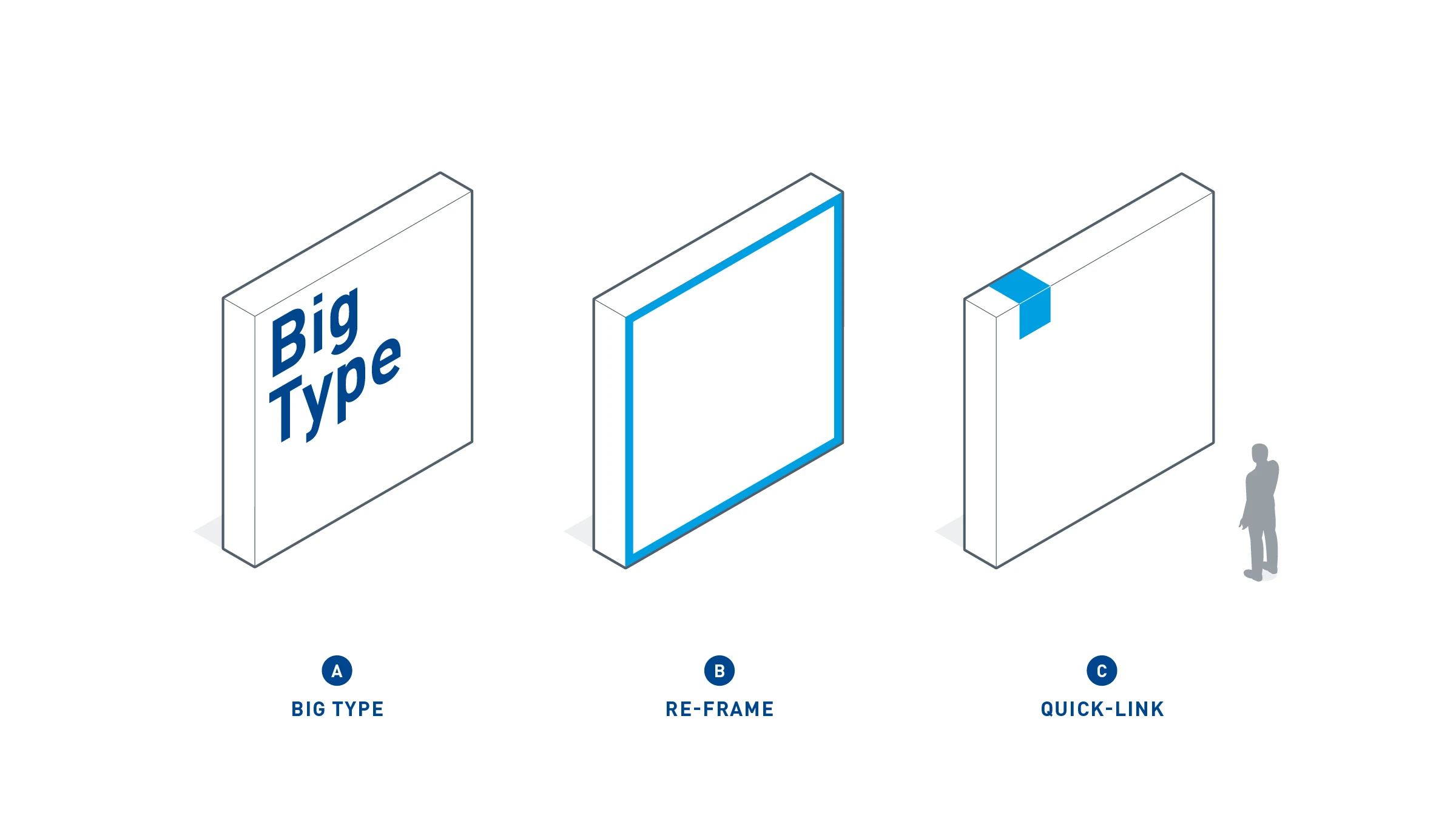
The 2D Big Type, Re-Frame and Quick-Link design elements are often used in combination.
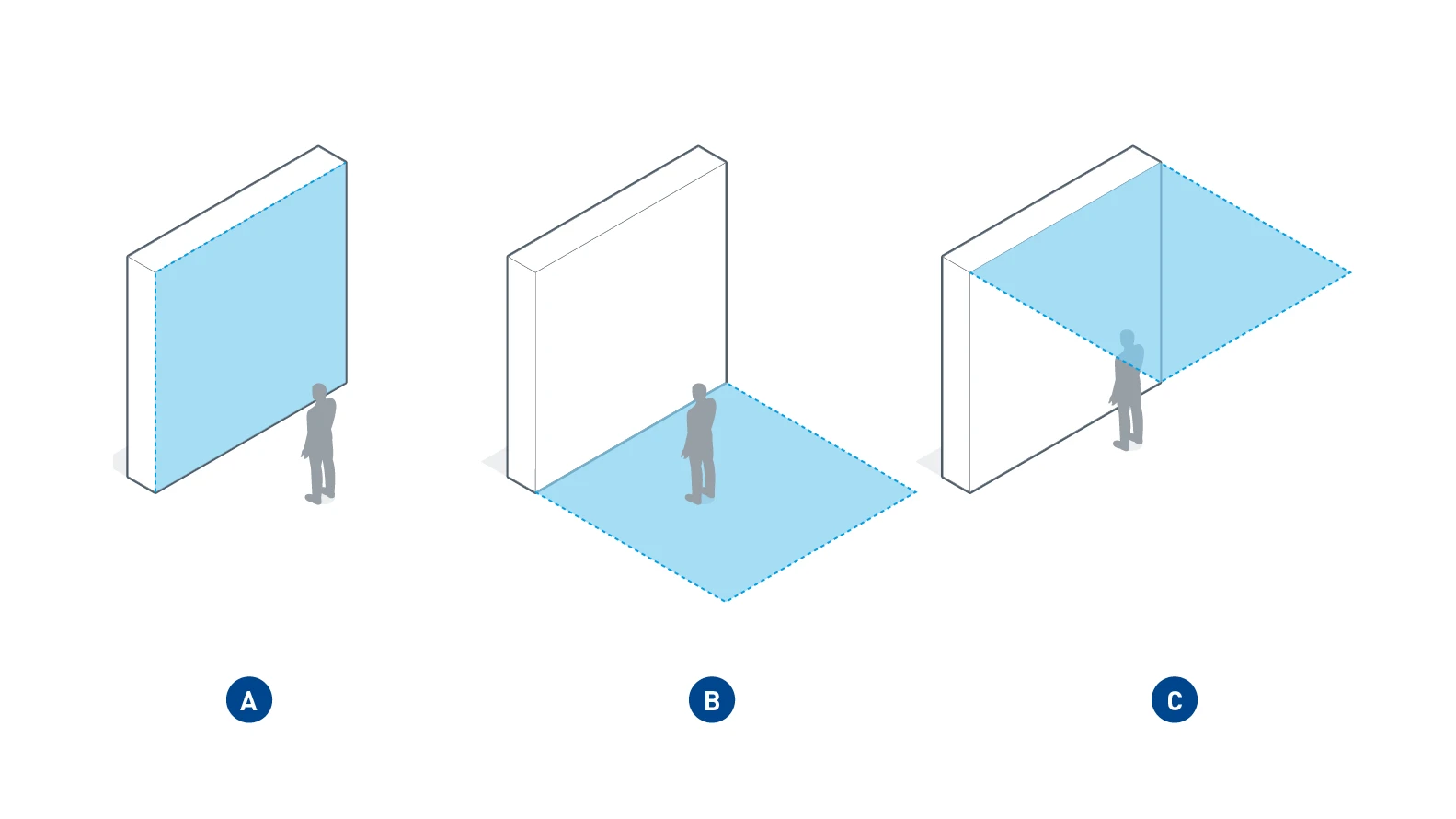
Surfaces – The design elements can be positioned on walls (A), floors (B) and ceilings (C). The edges are deliberately included.
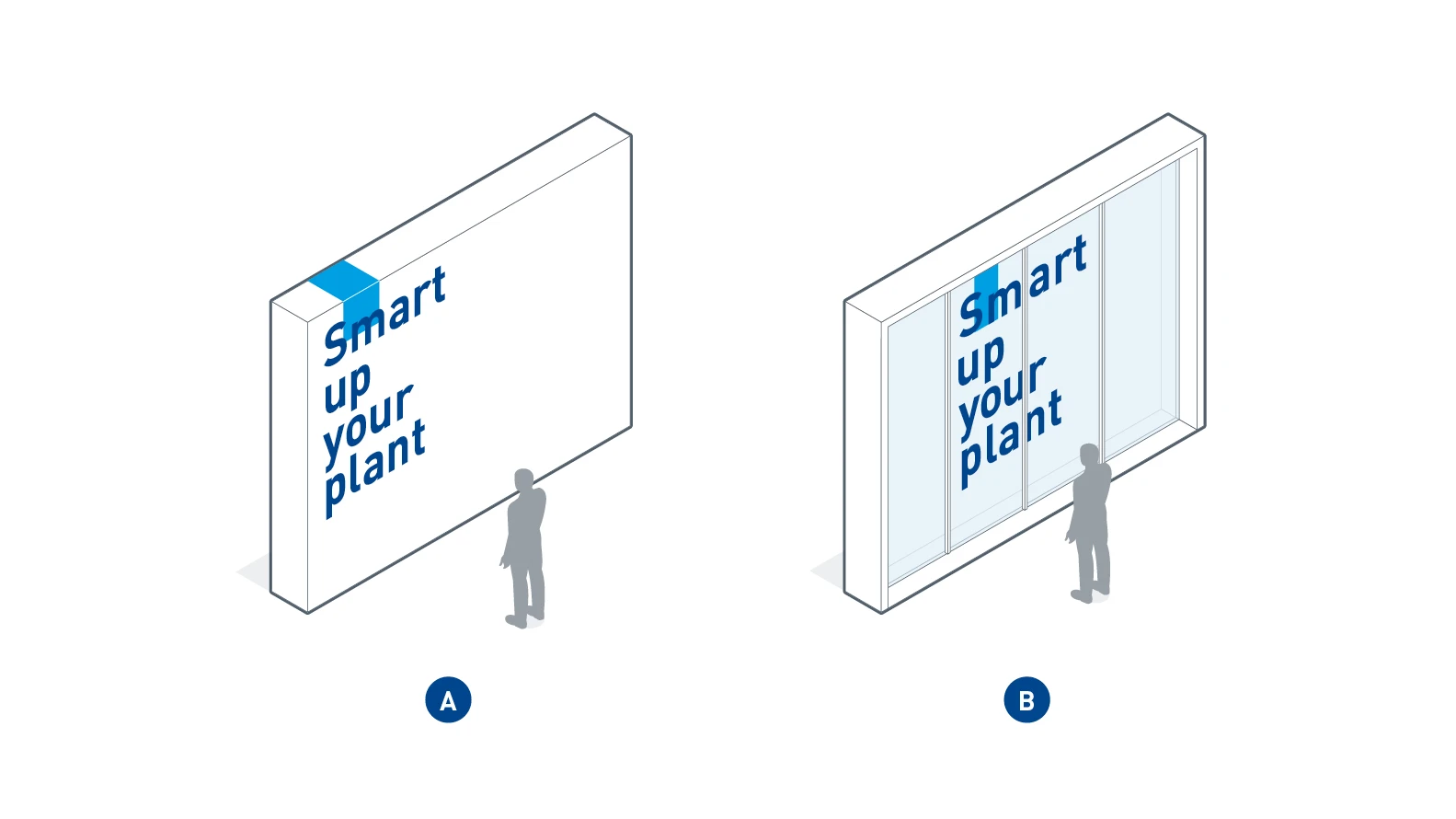
The design elements can be applied to opaque walls (A) or to translucent surfaces such as glass (B) to create an open and transparent effect.
2D Big Type
Big Type makes its full impact in large spaces. Cost-effective materials create a powerful impression over a long distance. Dürr is immediately recognizable as the sender. Big Type is ideal for conveying permanent or temporary messages to passing employees and customers. Big Type is not governed by fixed rules. It can incorporate structural features in a playful and light-hearted way. It is particularly eye-catching in combination with the Quick-Link or Re-Frame.
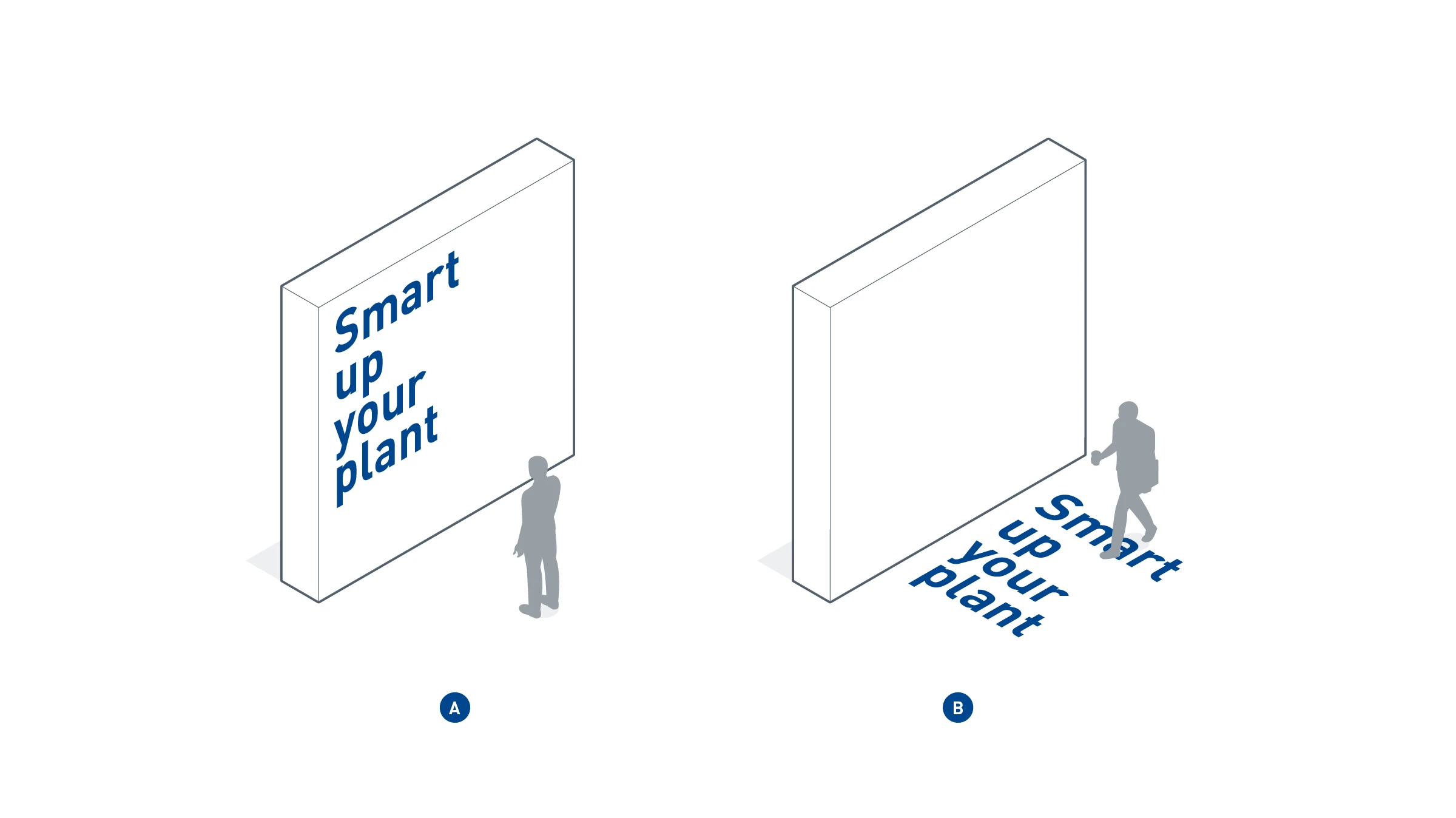
Surfaces – Big Type is mainly used on walls and floors.
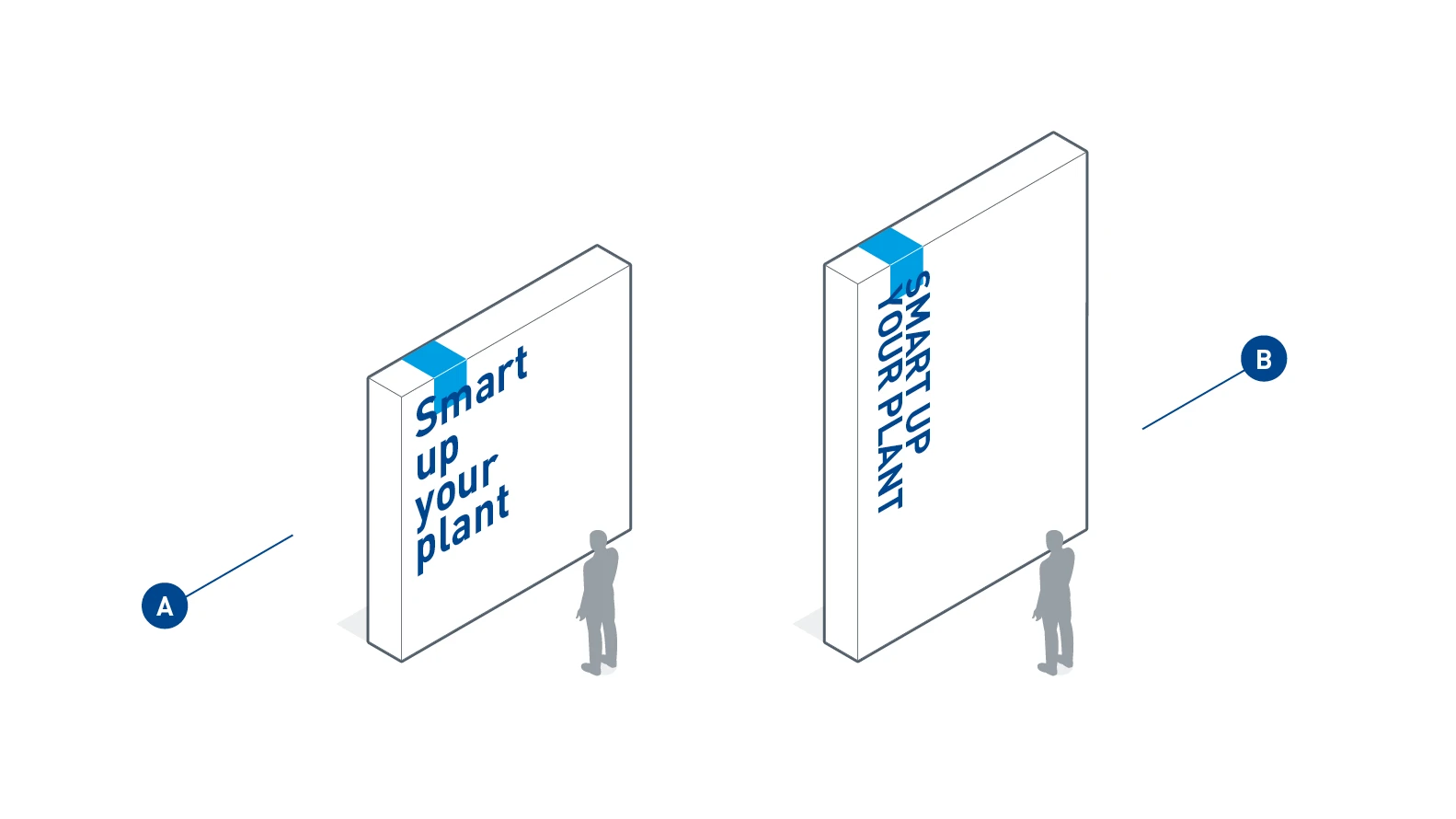
Variant A in mixed case: The text is positioned horizontally in the direction that it is read. Variant B in capitals: The text is positioned vertically and connected to the edge of the wall by the Quick-Link.

Variant A in mixed case: The text is positioned at 90 degrees to the direction of travel. Variant B in capitals: The text is positioned in the direction of travel.

Variant A in capitals: The text is connected to the edge of the wall by the Quick-Link. Variant B in mixed case: Words are spread freely across the surface and connected to one another by the Re-Frame.
2D Re-Frame
The Re-Frame is highly flexible and adapts to its architectural surroundings. The Re-Frame directs the observer’s attention and opens up new perspectives. It connects objects with one another or forms border zones.
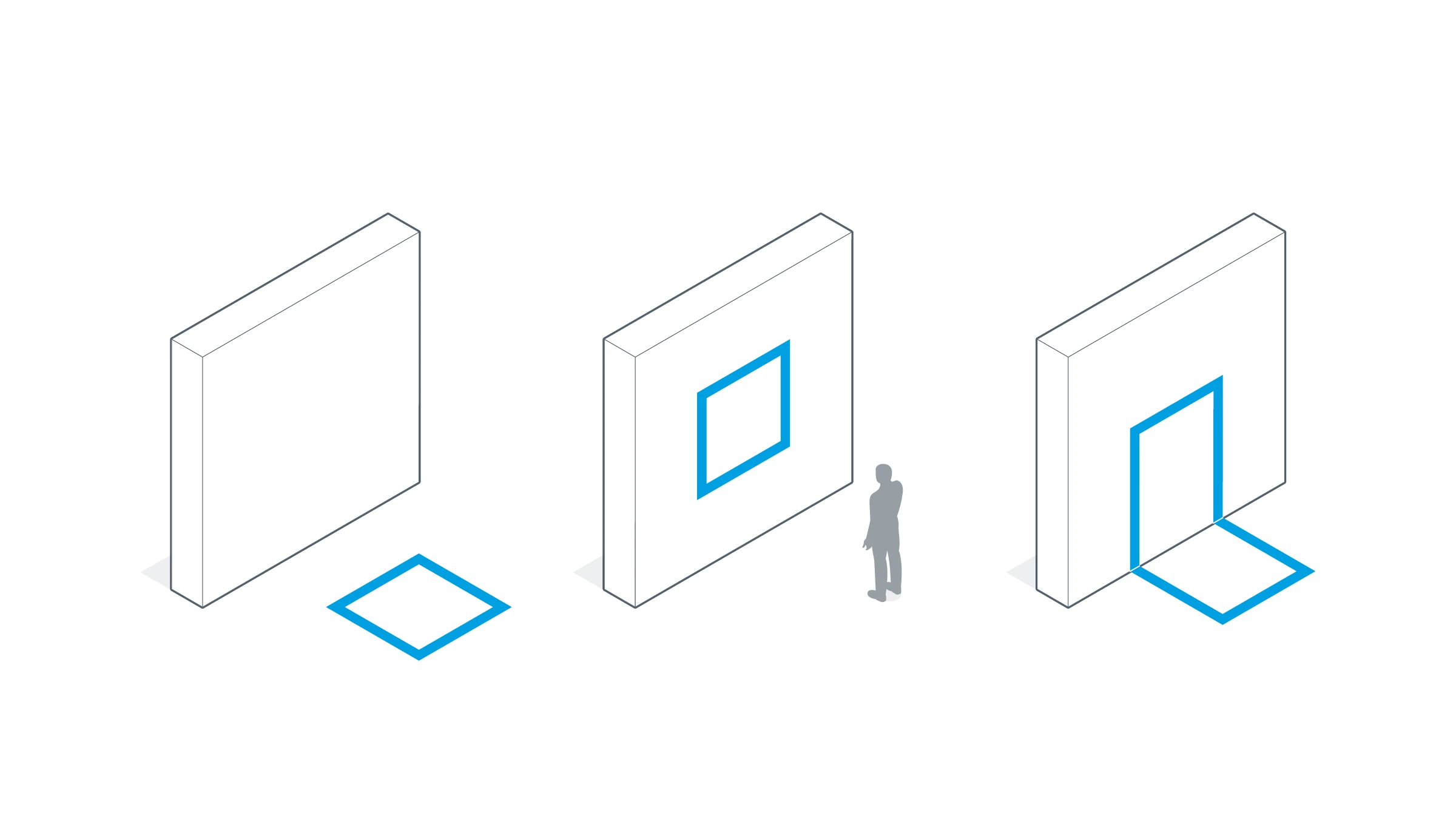
Surfaces – The Re-Frame can be positioned on individual surfaces or across edges and corners.
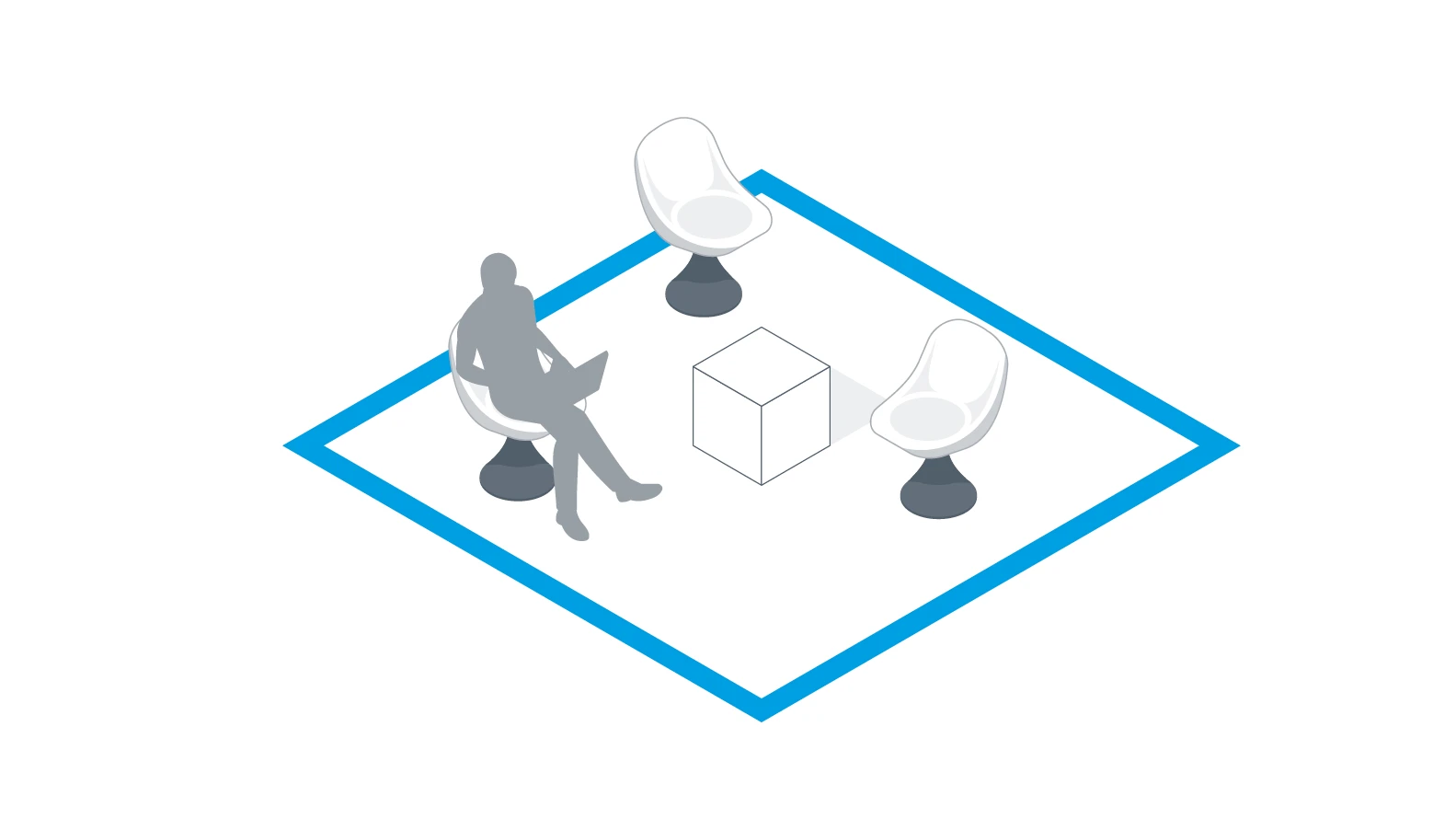
The Re-Frame can be placed on open floor surfaces to mark zones, such as meeting areas.
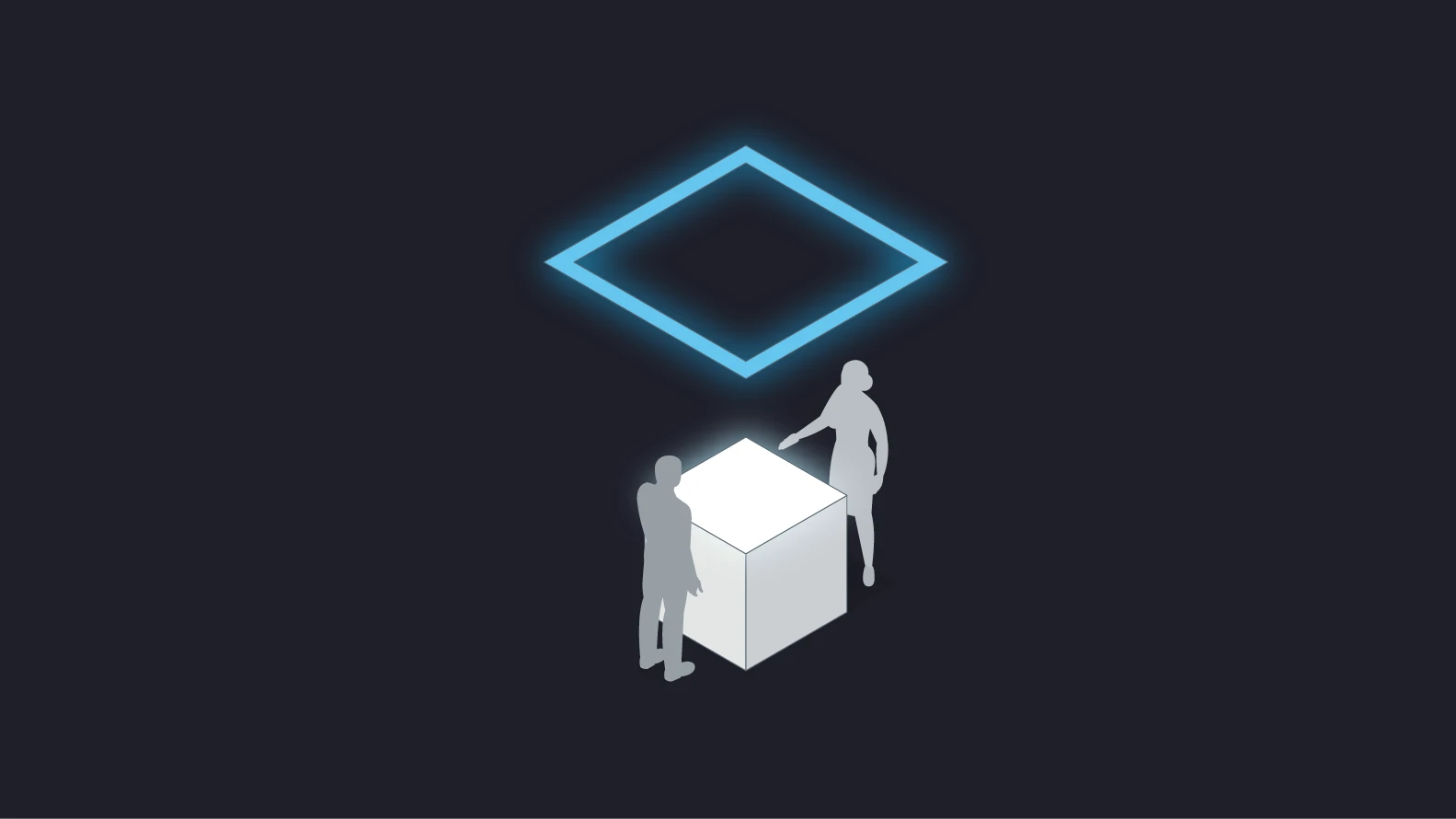
A pendant light in the shape of a Re-Frame over a standing desk also marks a zone.
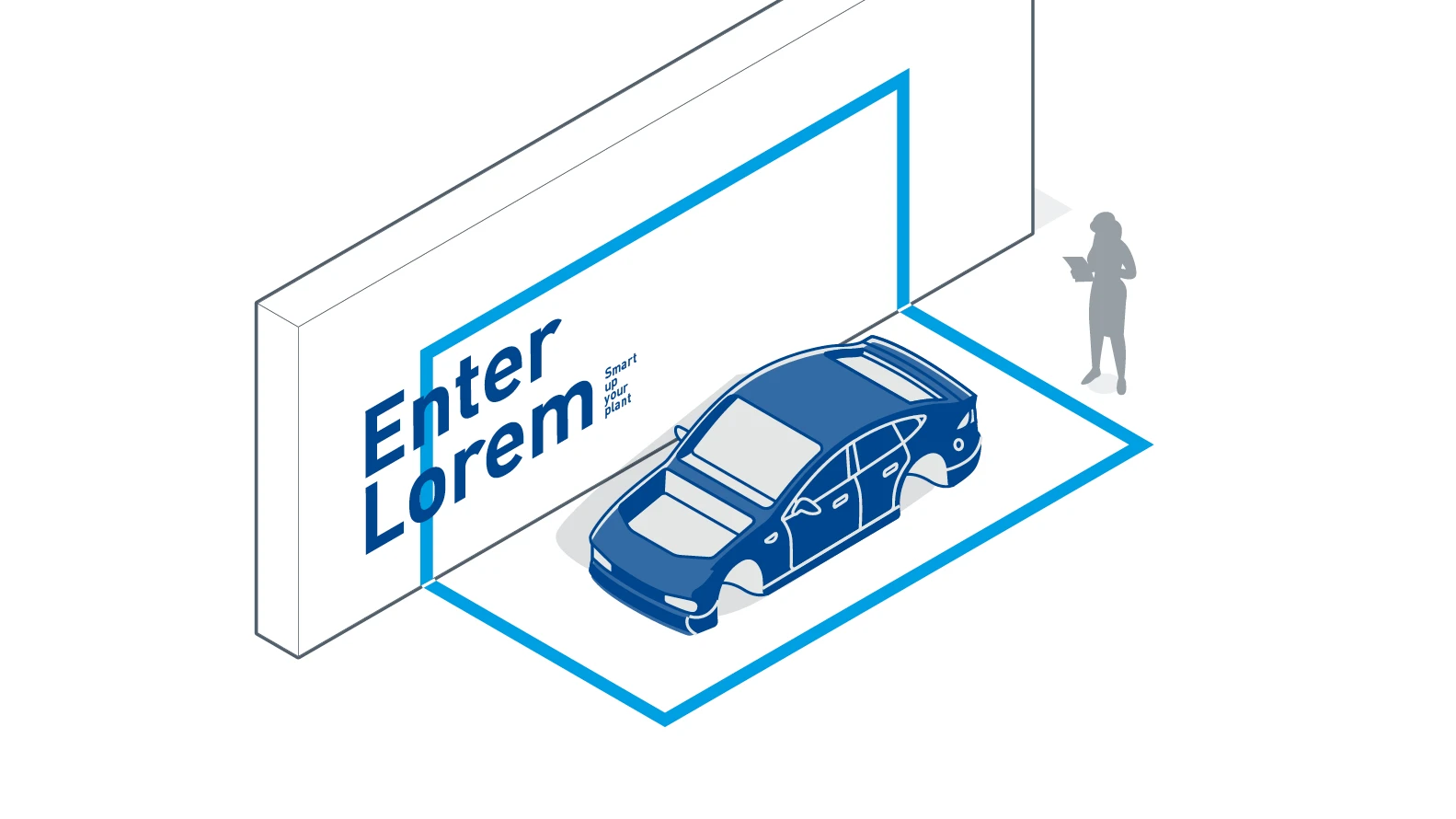
The Re-Frame can also define a viewing zone for an exhibit. It attracts attention from a distance and, at the same time, forms a boundary for the exhibit. The bend and the inclusion of the wall open up the area for additional text.
2D Quick-Link
The Quick-Link establishes connections. It connects people, areas, messages and exhibits with one another. This design element creates highlights and focal points and attracts the attention of visitors and employees.
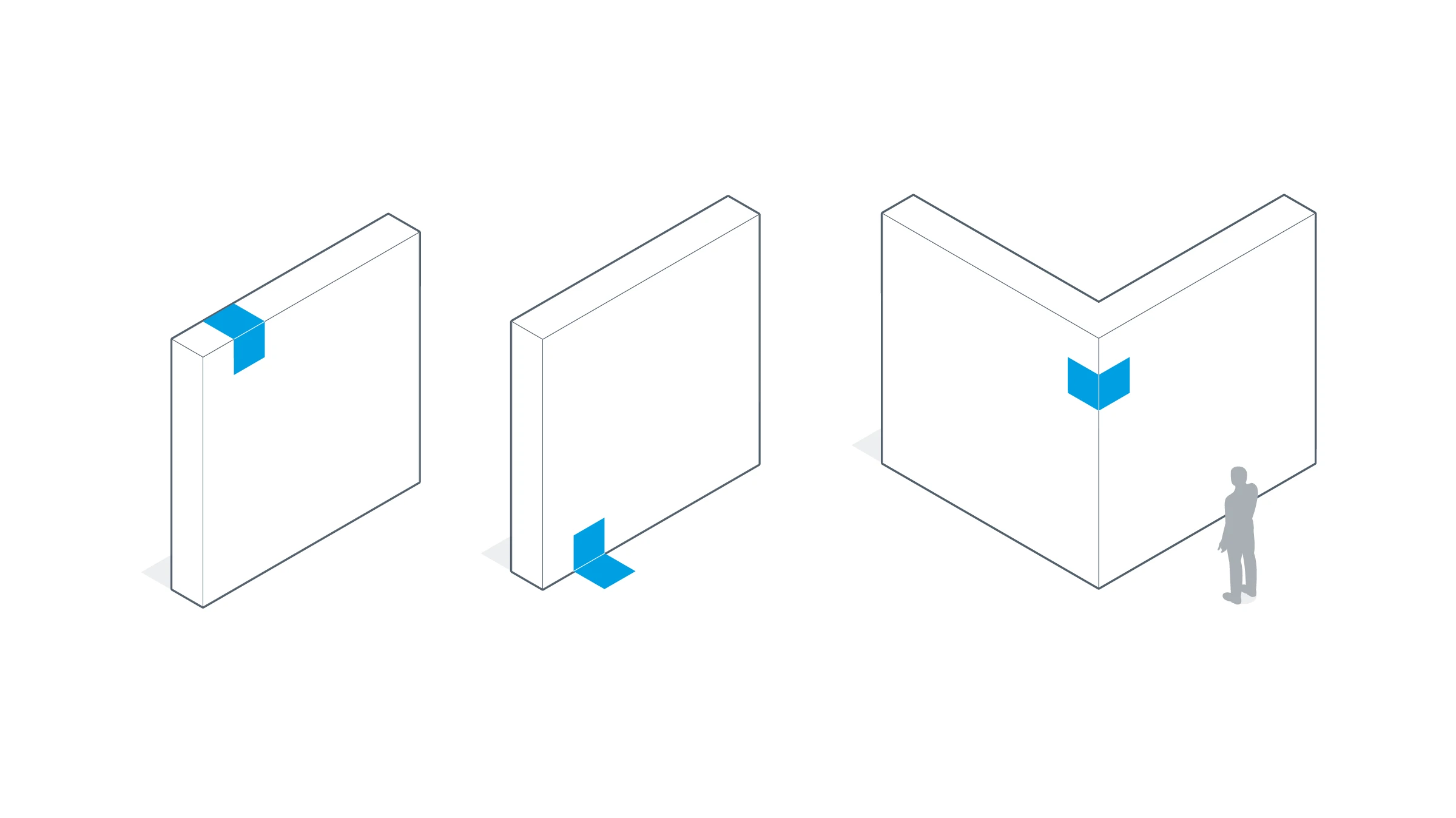
Surfaces – The Quick-Link can connect surfaces with one another: walls with floors, walls with ceilings or walls with walls.
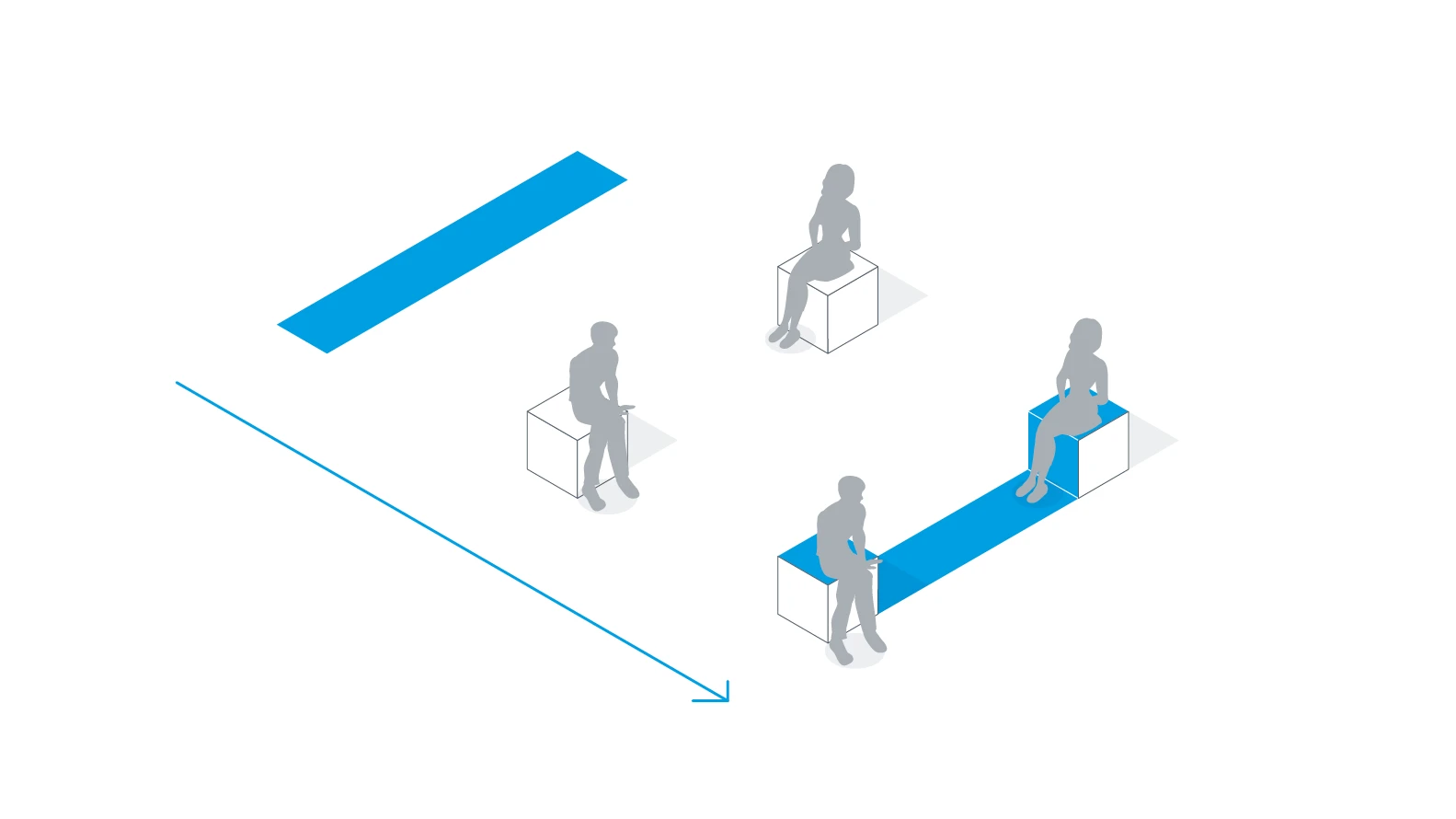
The Quick-Link connects people. As a connecting element between two seats, the Quick-Link opens up new opportunities for conversation.
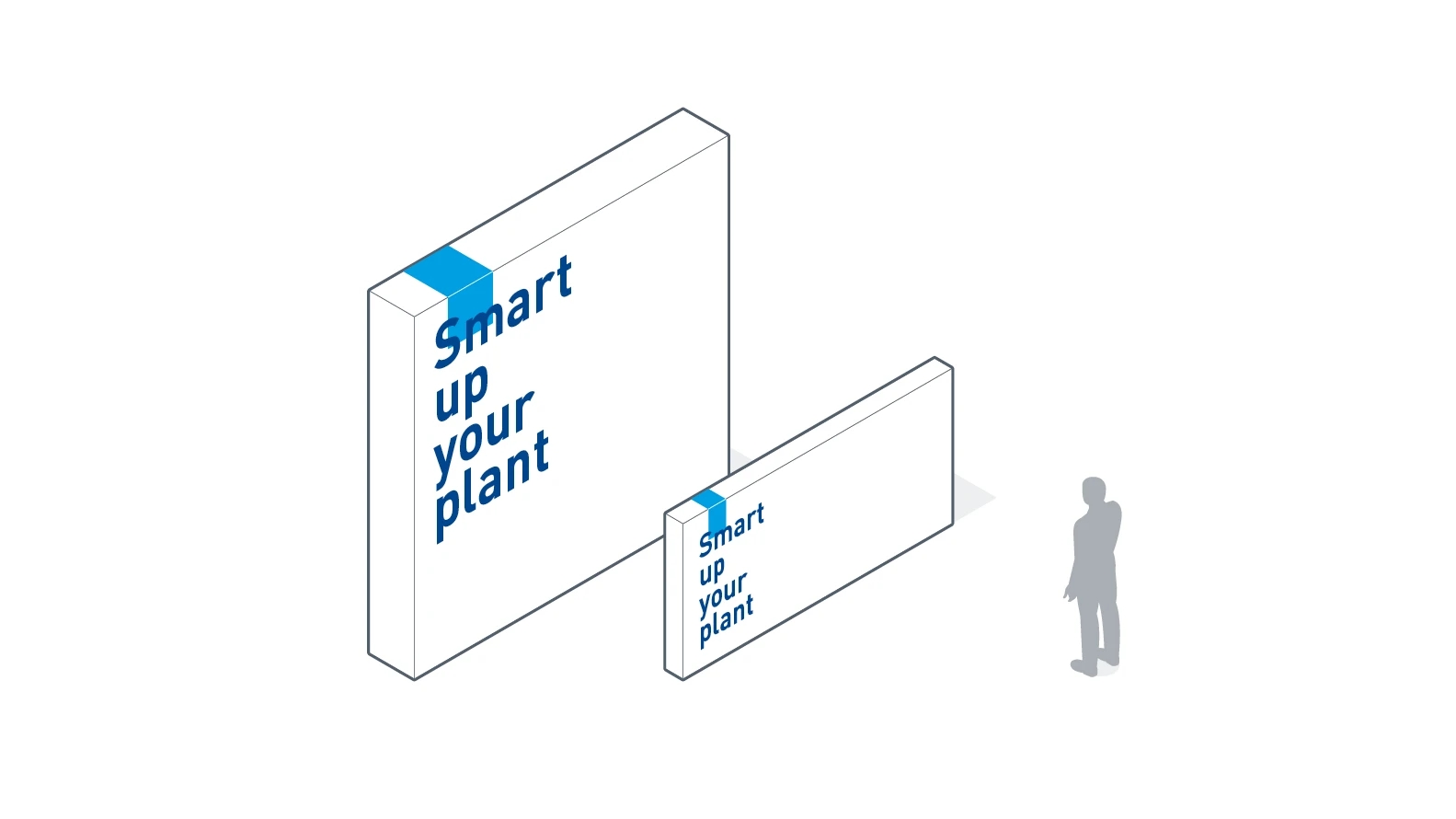
The Quick-Link is most frequently used in combination with Big Type. In the example, it ties the typography to the edge of the format. The design elements are reduced in size proportionally for use in smaller areas.
Applications
OPEN HOUSE
At the open house event at the Dürr headquarters in Bietigheim-Bissingen in 2019, Dürr presented itself as an innovative host. The striking use of Big Type on the glass surfaces of the main entrance helped to guide visitors and, at the same time, was the first public appearance of the new corporate design.
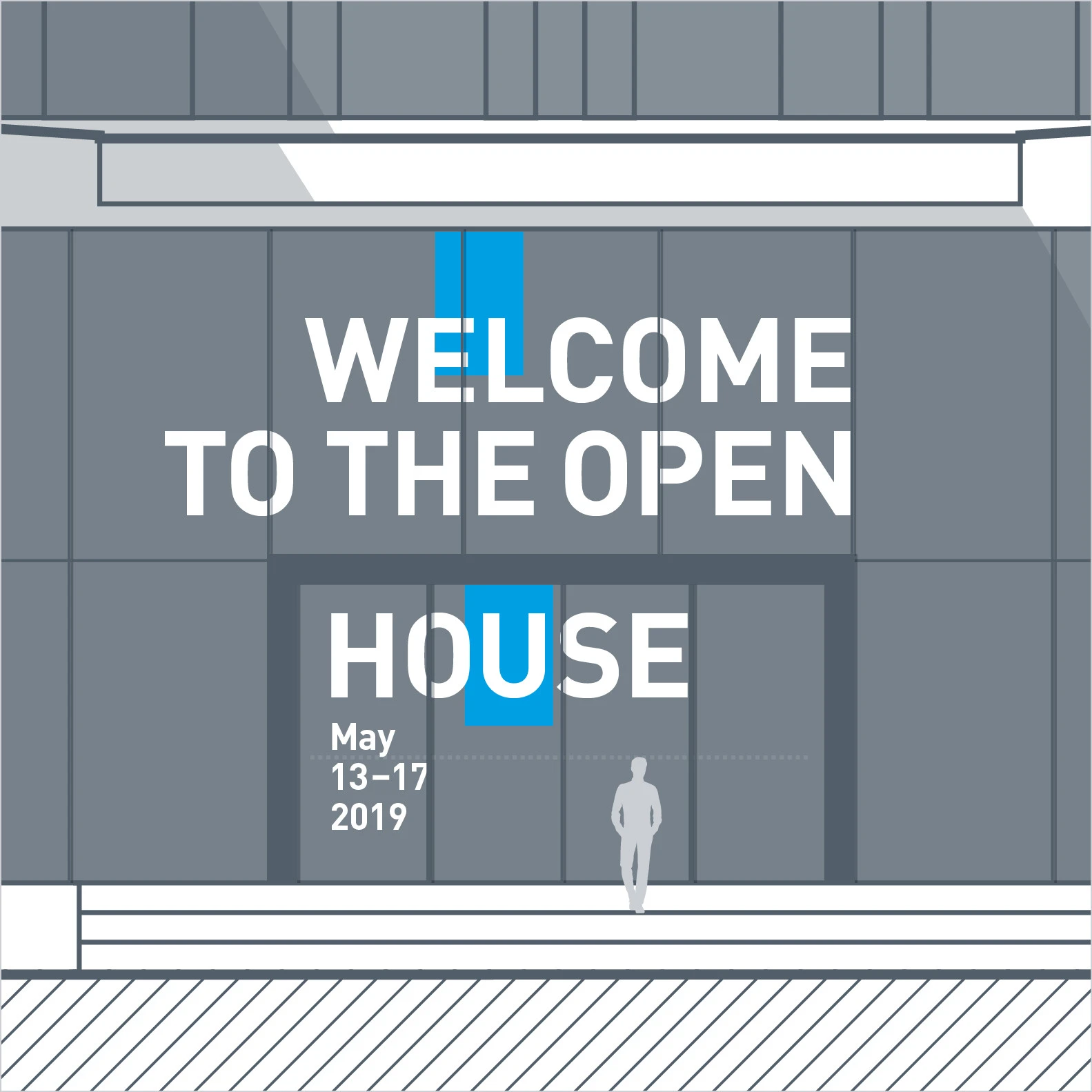
Big Type and Quick-Link – The formal, rigorous uppercase text is fluently integrated into the architecture. The Quick-Link ties the blocks of text to the structural elements.
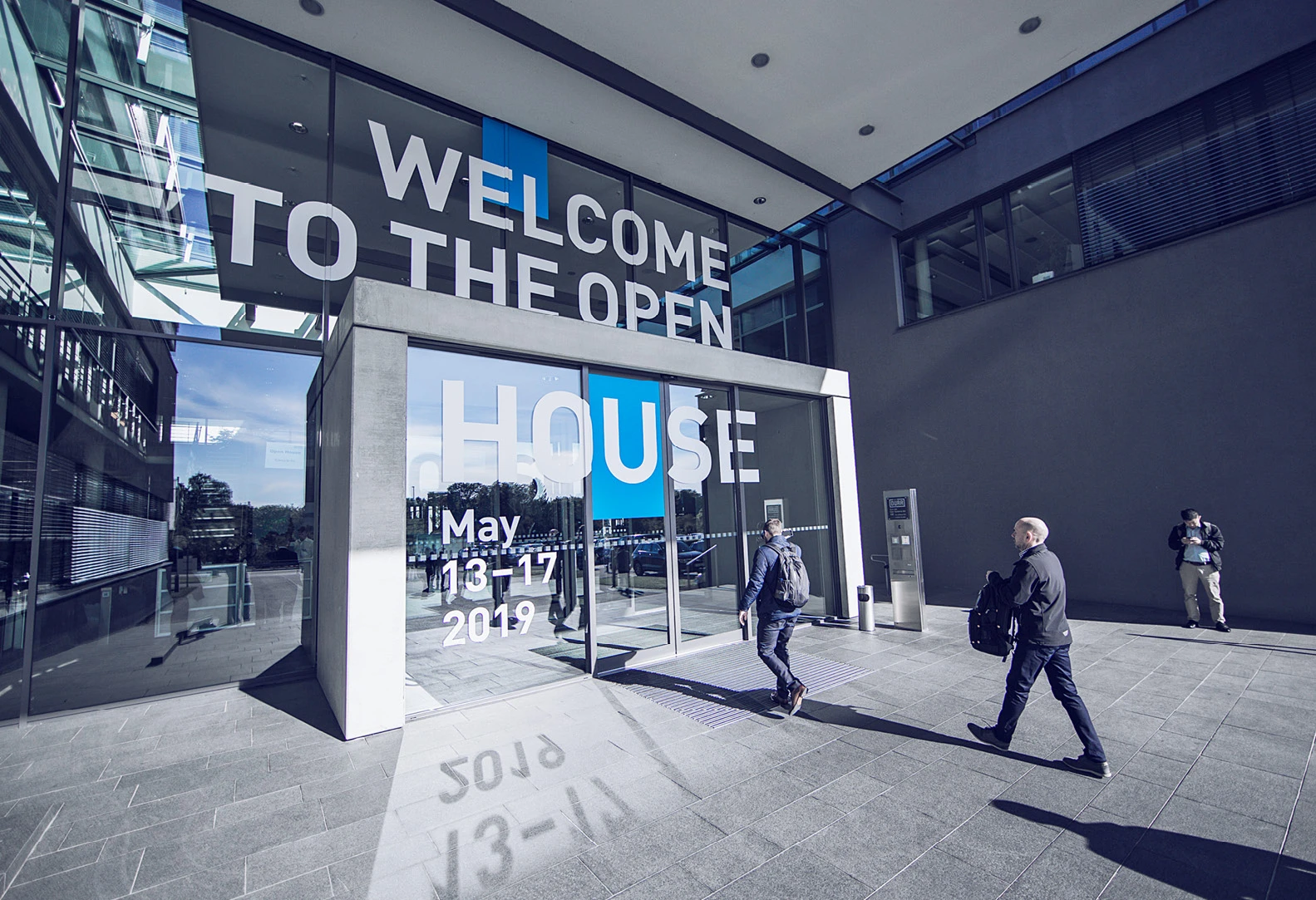
Portal – A grand gesture to welcome visitors.
EMPLOYER CAMPAIGN
During the process of creating the new corporate design, elements were presented to the employees. Messages were displayed in different places within the headquarters building, some of them amusing and others striking.
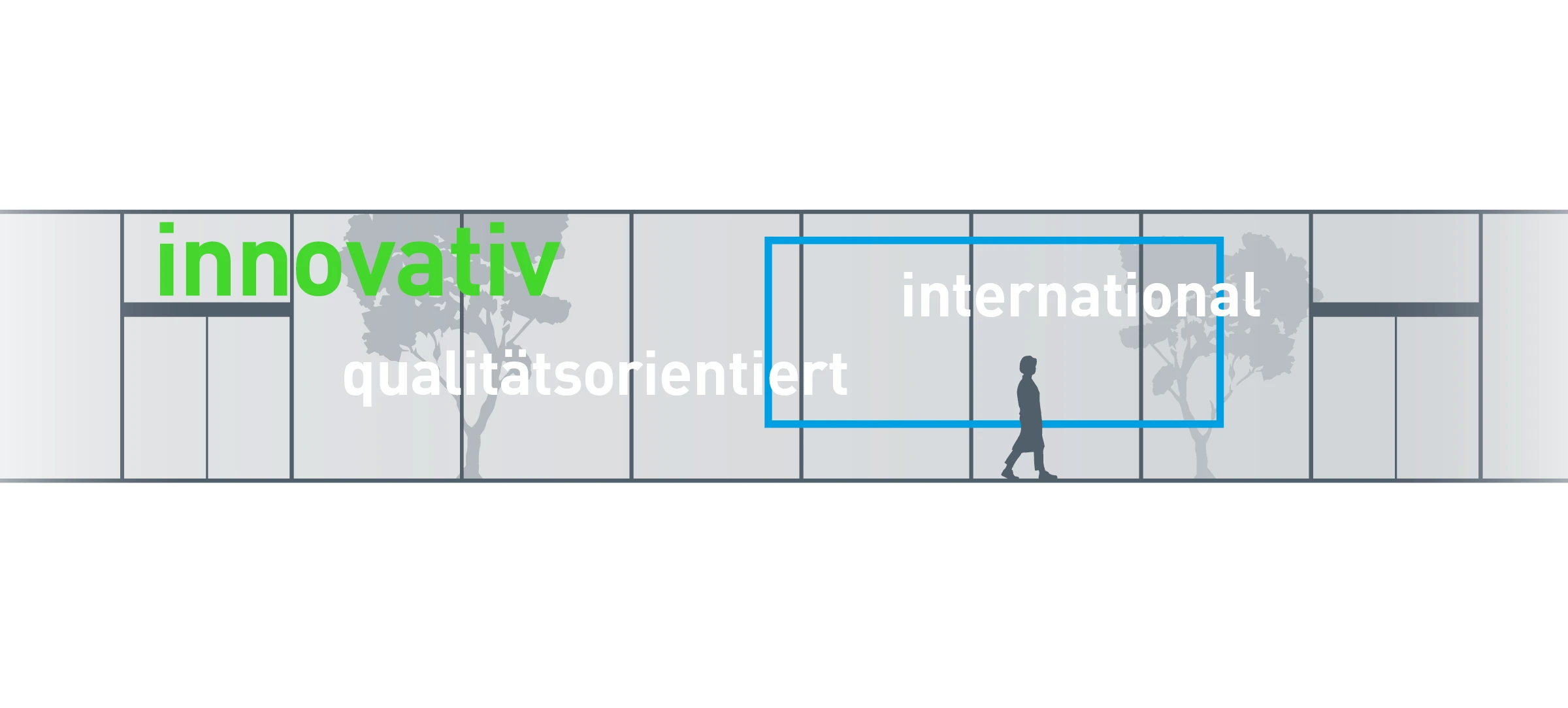
A view of the restaurant window with Big Type – The Dürr brand values were arranged randomly in Big Type on the inside of the window. They were linked together by the Re-Frame. Text created with a film cutting plotter is flexible and ideal for large, smooth surfaces.
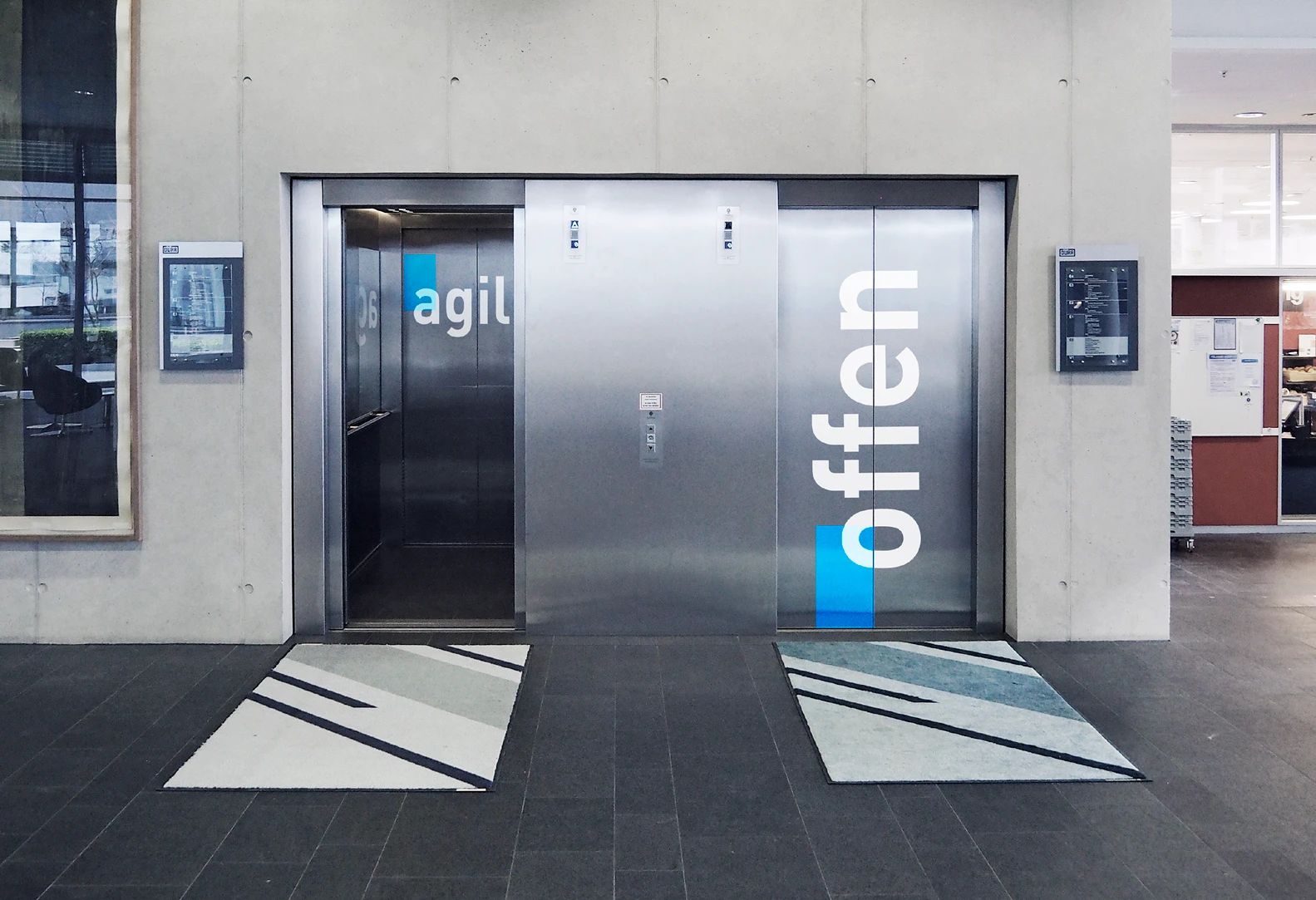
Passenger lift – This shows the amusing use of the terms “agil” (agile) and “offen” (open) on and in the passenger lifts.

Steps – A message is subtly integrated into the interior design, for example on these steps.
3D design elements
If you add the third dimension of depth to the two-dimensional design elements, you can create geometric, sculptural, stand-alone objects that represent the Dürr brand in open spaces. The objects range in size from seat height to ceiling height. People can touch, walk around, pass through or sit on the elements. The 3D elements generate a feeling of excitement in interior and exterior spaces at Dürr sites. They create peaceful areas and experience zones that attract employees and visitors.
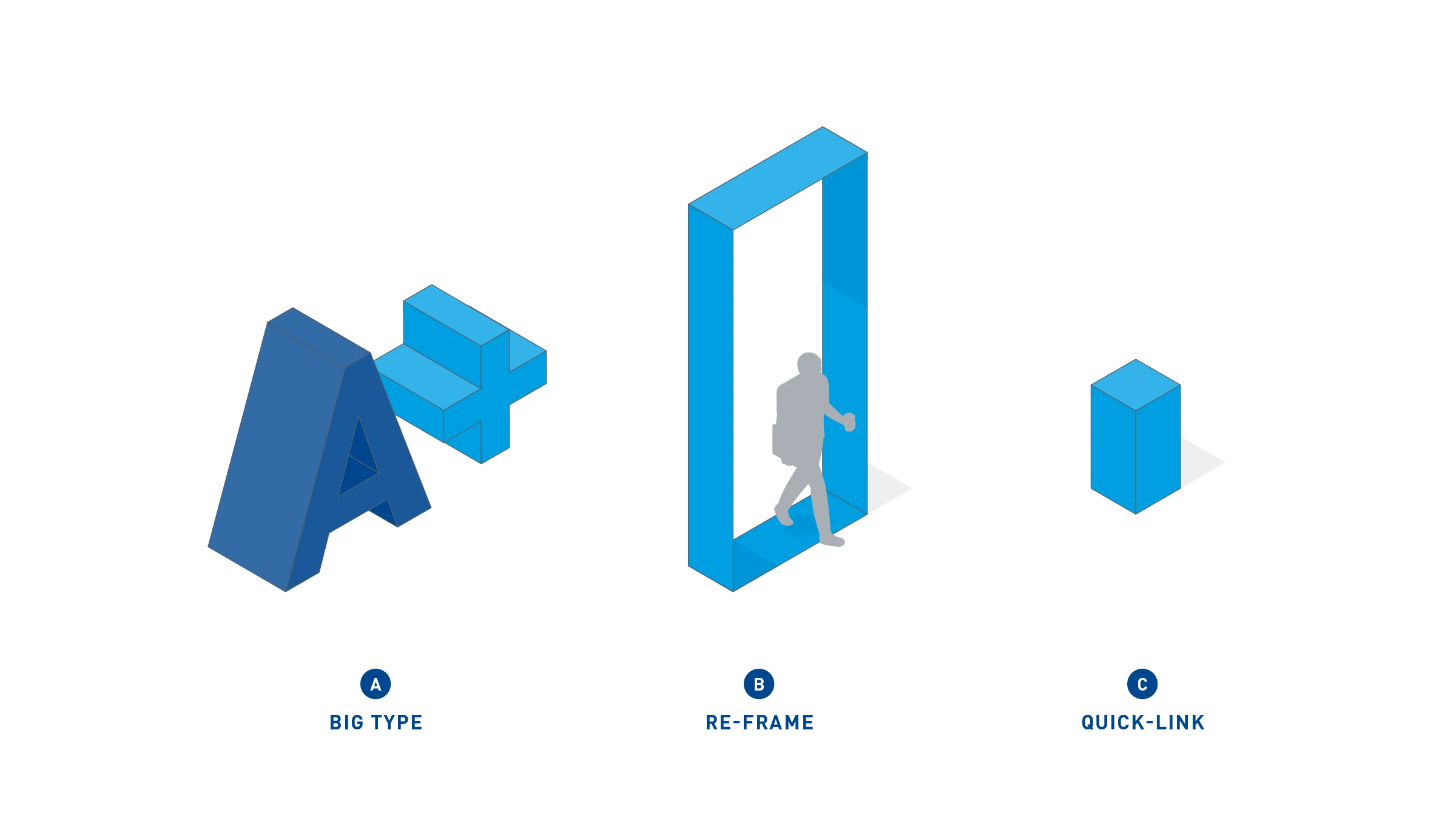
3D design elements – Big Type, Re-Frame and Quick-Link
3D Big Type
A three-dimensional sculpture of Big Type is ideal for acronyms, brands and product names. It allows abstract, technical names or digital products, such as DXQ, to be brought to life and made tangible.
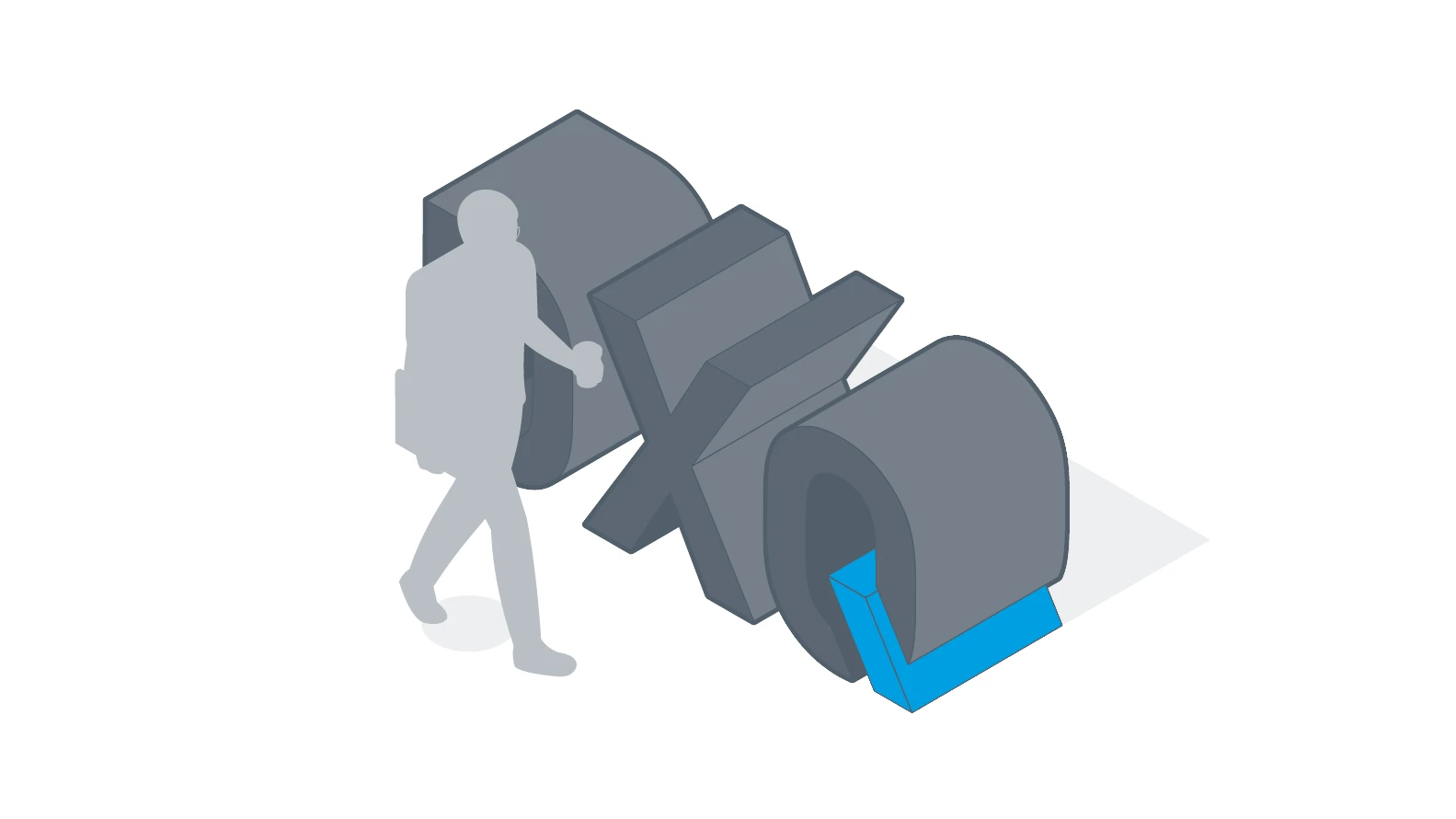
Acronyms and short brand or product names make ideal three-dimensional objects. This keeps the visual and structural complexity to a minimum.
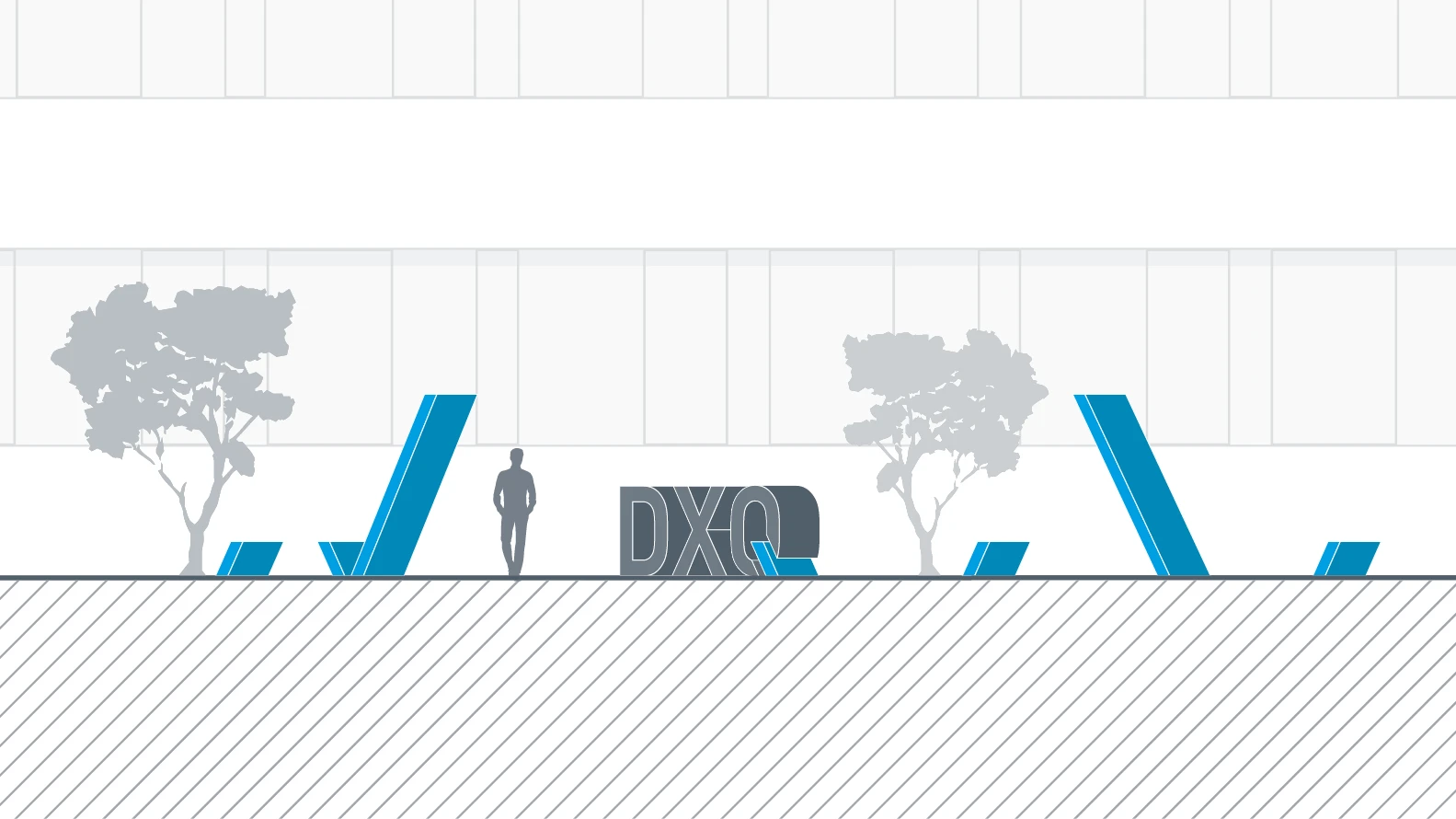
The DXQ product brand can be used to create simple geometric shapes, for example. These elements in different lengths can be freely positioned in interior and exterior spaces. The result is a landscape that employees and visitors can experience and walk through.
3D Re-Frame
The two-dimensional Re-Frame represents focus and a change of perspective. With a third dimension, the Re-Frame logically becomes a portal that shows its surroundings in a new perspective. It is possible to walk through it and to view it from the back.

The form and thickness of the frame can vary depending on the context.
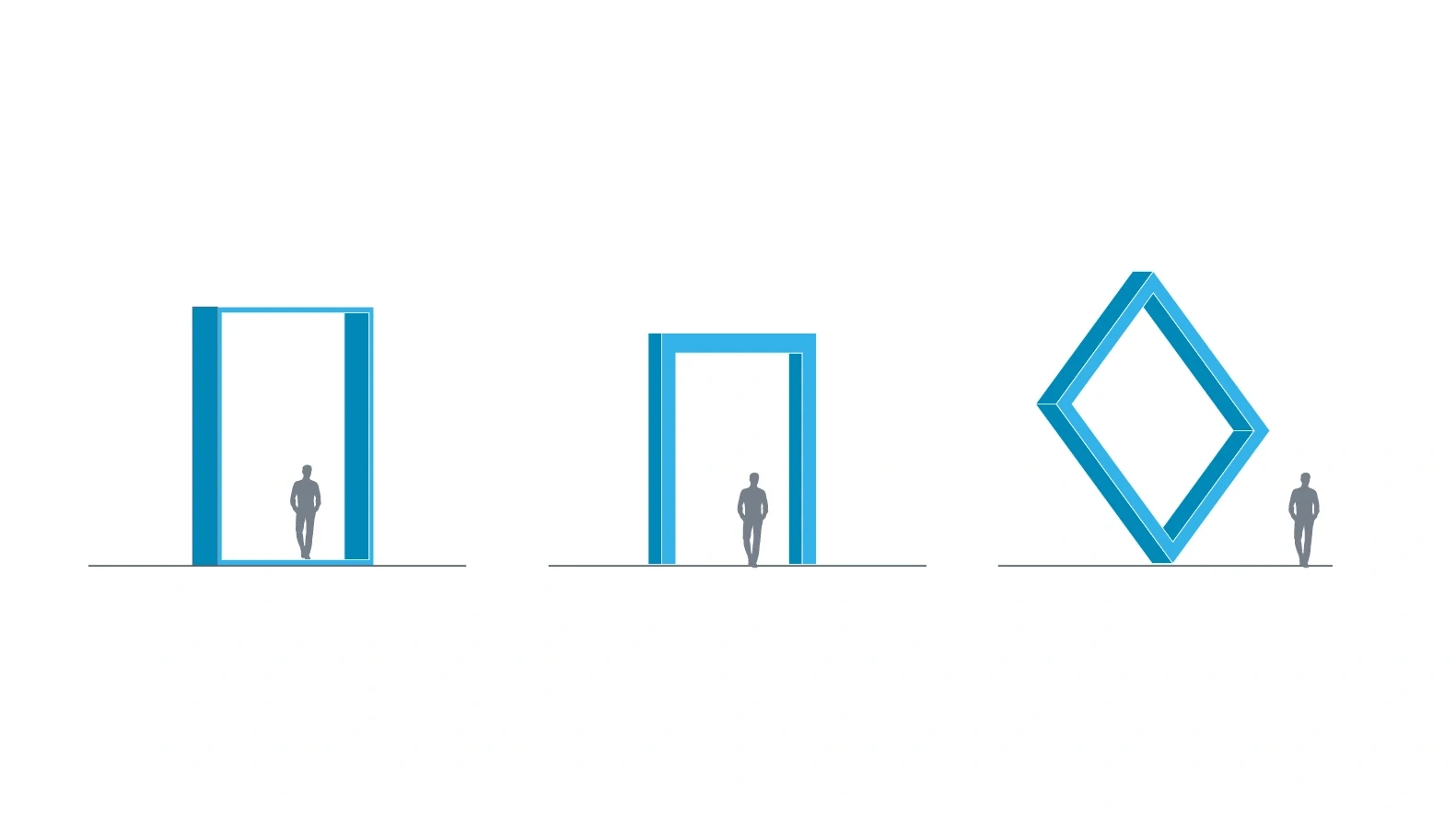
The examples show different options for using a three-dimensional Re-Frame as a sculpture in interior and exterior spaces.
3D Quick-Link
As a three-dimensional object, the Quick-Link can create a highlight within a space. However, it should only be used in moderation. It can take the form of a column, a podium or a bench seat or it can link architectural elements together.
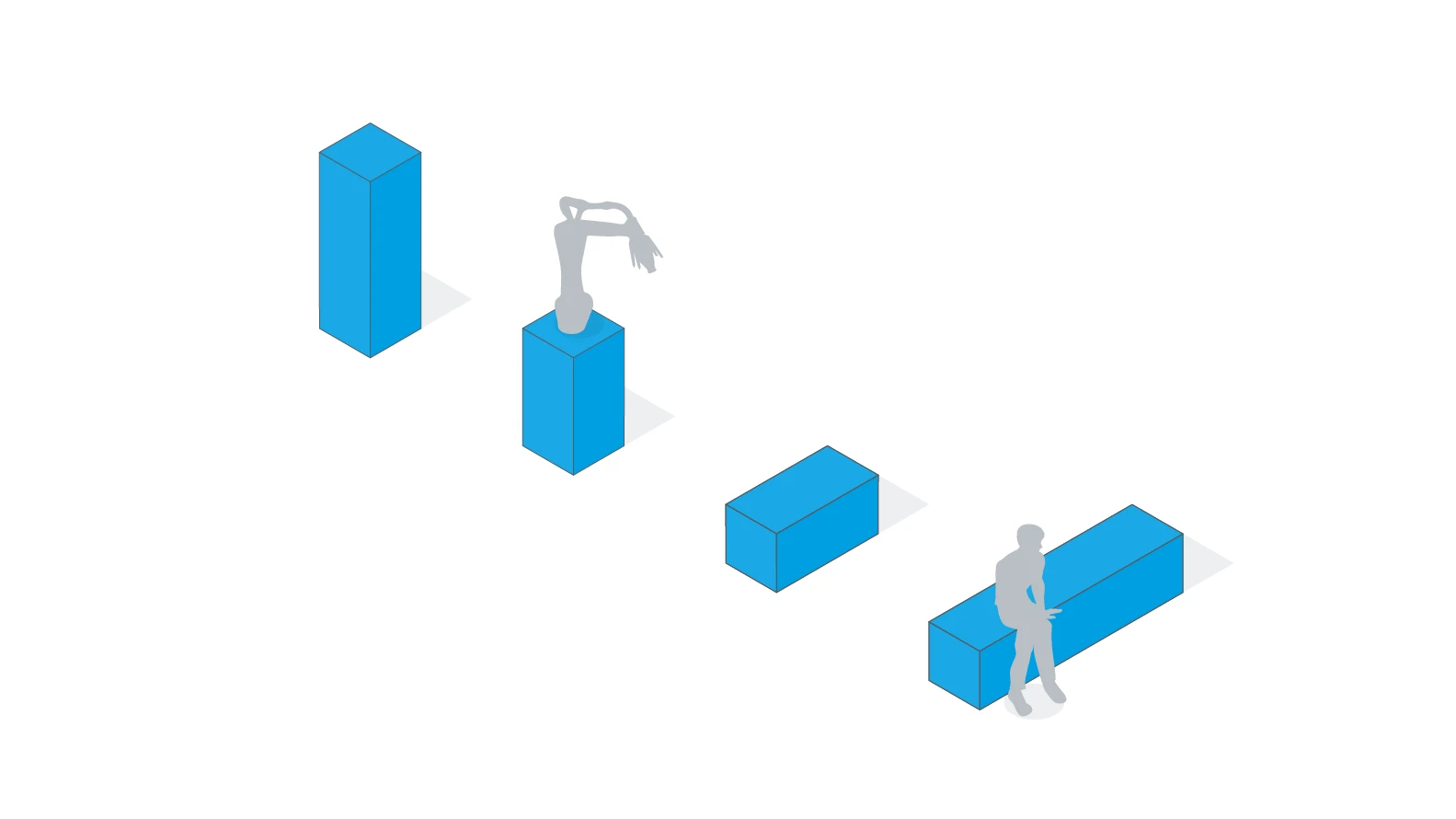
Three-dimensional Quick-Links in different lengths can be used vertically as columns or horizontally as benches.
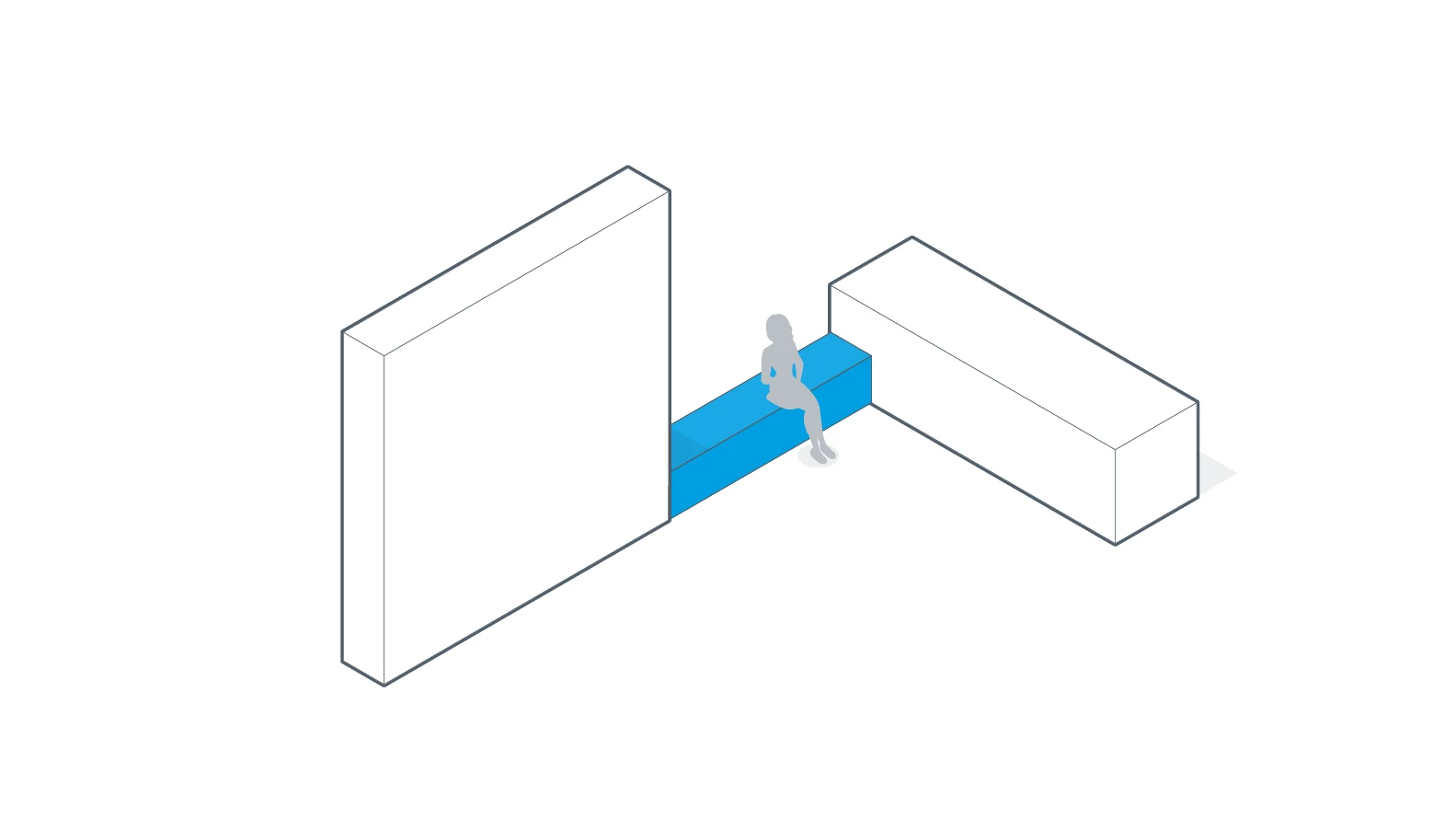
The Quick-Link can also link architectural elements together.
